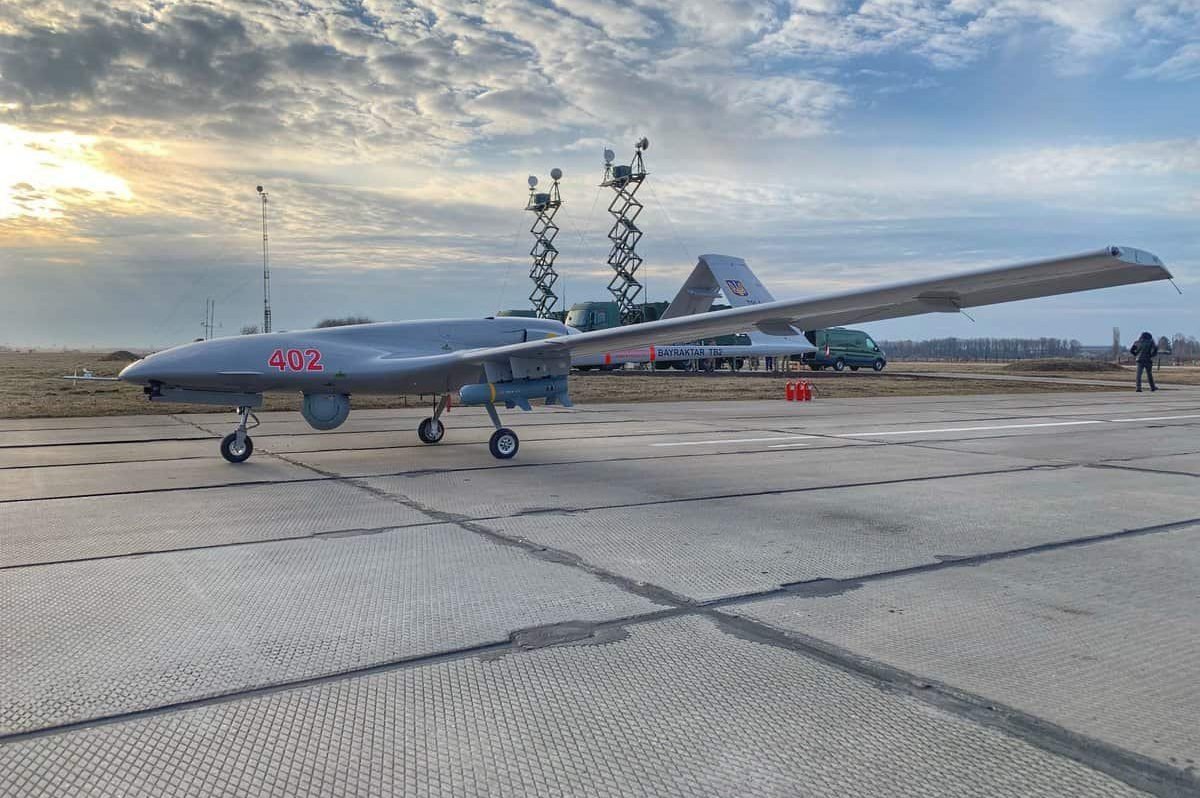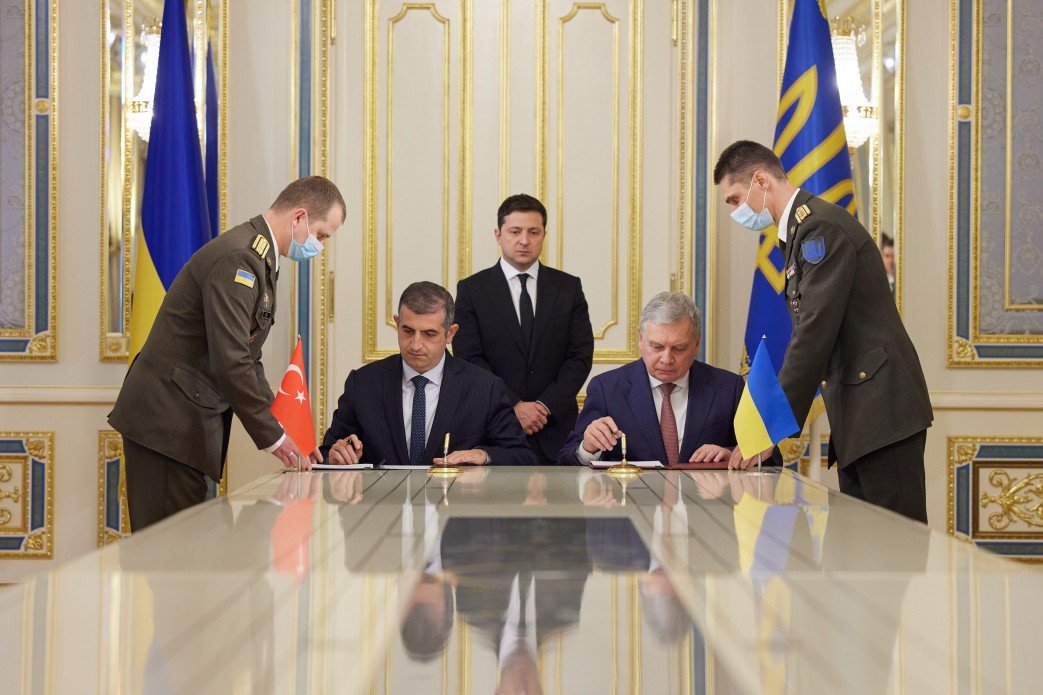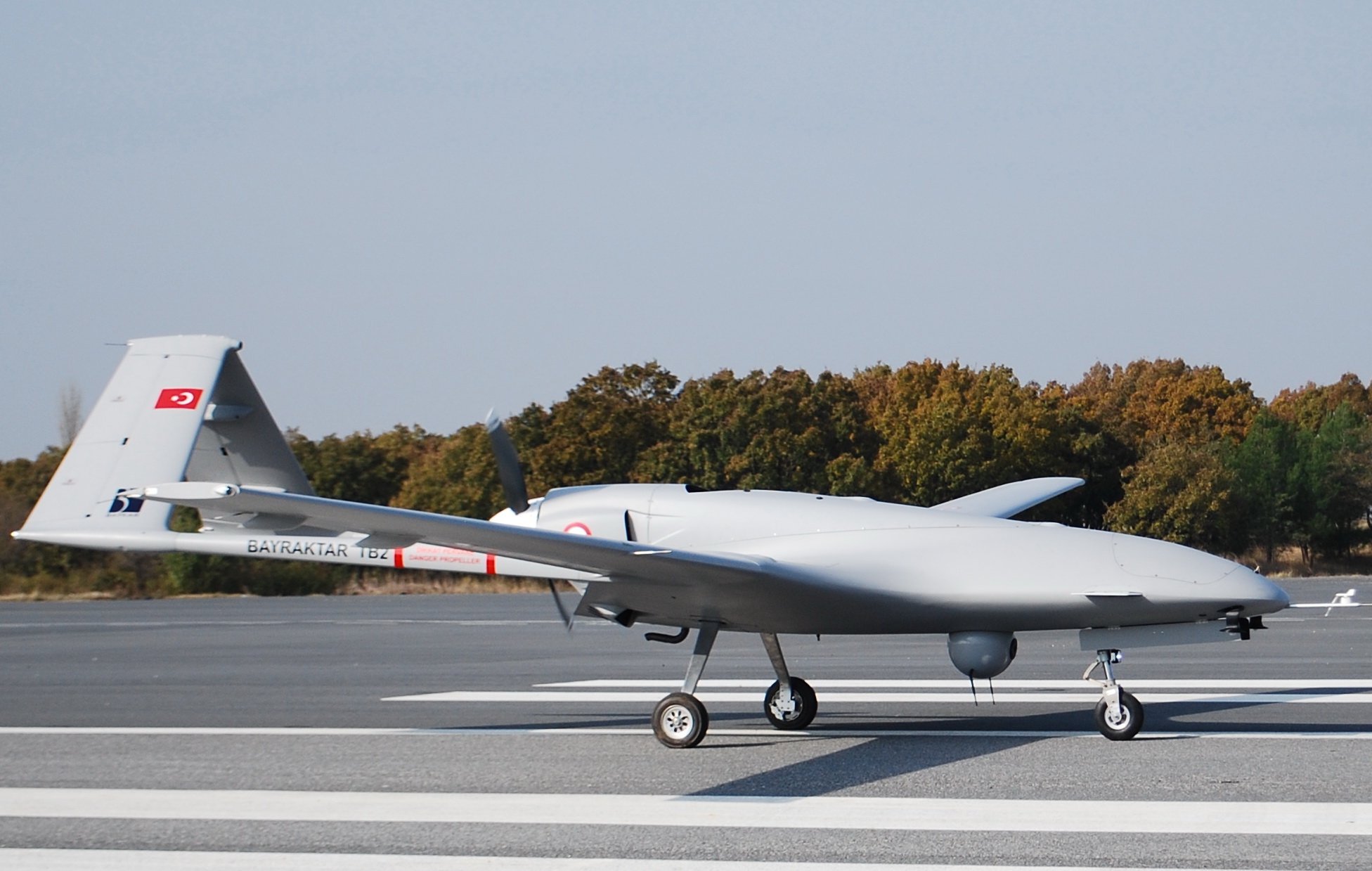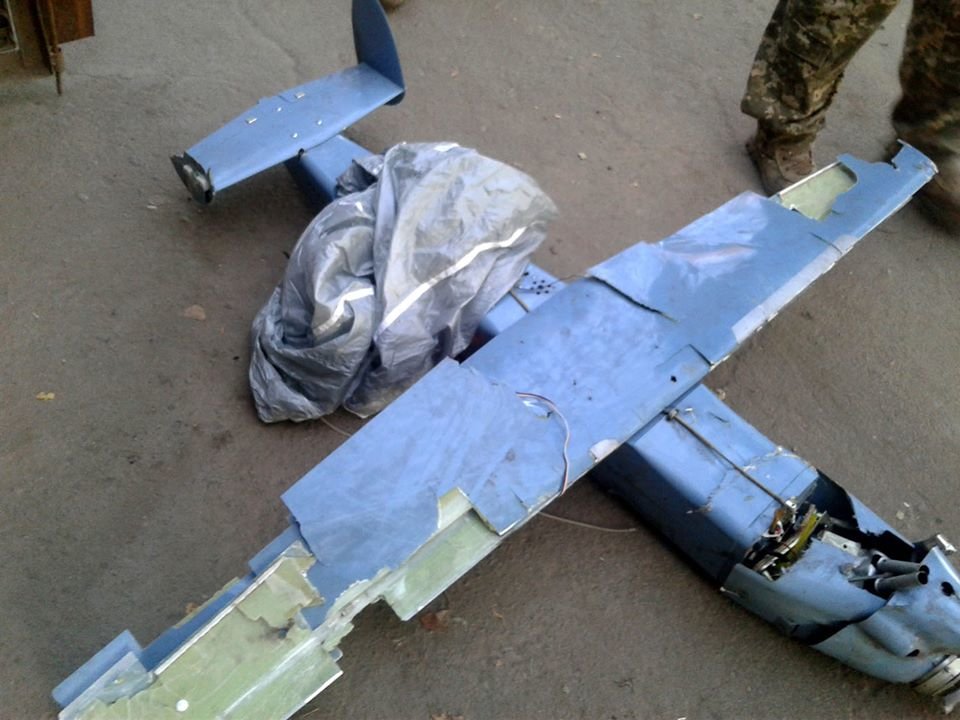
A Ukrainian Air Force Bayraktar TB2 armed reconnaissance drone. Photo courtesy of the Ministry of Defense of Ukraine.
KYIV, Ukraine — Ukraine and Turkey recently signed a deal to construct a joint facility on Ukrainian soil for the upgrading and maintenance of armed Turkish unmanned aerial vehicles, marking the latest collaborative venture in the two countries’ so-called “drone alliance.”
“It’s a big real step forward. I am grateful to [Turkish President Recep Tayyip Erdoğan]. This is a real support for the sovereignty and independence of Ukraine,” Ukrainian President Volodymyr Zelenskyy said during a Wednesday, Sept. 29, ceremony in Kyiv to finalize the memorandum, which also includes plans for a joint training program related to the Turkish-designed Bayraktar TB2 armed reconnaissance UAVs.
Ukraine’s Ministry of Defense also plans to build a factory to manufacture the Turkish-designed combat drones. Baykar, the Turkish manufacturer, is set to invest in the Ukrainian plant, which will be operated by Ukraine’s Ministry of Defense without Turkish oversight, according to Kyiv.
The Bayraktar TB2 drone, which has a maximum altitude of about 27,000 feet and can stay aloft for some 27 hours, is capable of firing a variety of weapons, including anti-tank missiles. Azerbaijan’s military employed the Bayraktar to lethal effect during combat last year against Armenian forces in the disputed Nagorno-Karabakh region.
“Drones are needed to deter Russia so that Russia thinks twice before planning any escalation or any large-scale attack on Ukraine,” Ukrainian Foreign Minister Dmytro Kuleba said in June, explaining Ukraine’s purchase of a fleet of the Turkish combat drones.

Marking the beginning of what some observers colloquially refer to as the “drone alliance,” Ukraine first announced in January 2019 that it was purchasing an unspecified number of the Turkish combat drones. Lt. Gen. Valeriy Zaluzhny, the commander in chief of Ukraine’s armed forces, announced in September that Ukraine planned to triple the size of its existing Bayraktar drone fleet.
The latest joint drone project “indicates both states likely intend this to be the start of longer-term cooperation rather than a direct sale,” Mason Clark, lead Russia analyst for the Institute for the Study of War, told Coffee or Die Magazine. “Both states will likely pursue further military cooperation and training in the future.”
Although a top Ukrainian defense official announced in July 2020 that some Bayraktar drones may be deployed to Ukrainian units in the country’s eastern Donbas region, where a low-intensity land war against occupying Russian forces has simmered for years, to date, Ukrainian forces have not used the Bayraktar TB2 in combat.
While air power has not played a significant role in the conflict since the summer of 2014, both sides use unmanned drones for reconnaissance — and occasionally for dropping hand grenades. But there’s never been a concerted deployment of drones by either side for the purposes of targeted airstrikes, such as those the Bayraktar is capable of executing.
“It is not enough to just buy Bayraktar TB2. Now we are learning to use this technique,” Zaluzhny, Ukraine’s top military officer, said in September. “To be honest, it would be more convenient if we had the experience of Azerbaijan. I admit, unfortunately, that we know little from this experience.”

Ukraine has been locked in a static trench war against Russian forces in its southeastern Donbas region since April 2014. Since a February 2015 cease-fire went into effect, neither side has made a serious attempt to effect a breakthrough or take significant new ground. The war, consequently, has been locked in a stalemate marked by daily exchanges of artillery, mortar, and sniper fire.
Since 2014, Ukraine has revamped its armed forces to meet the immediate needs of combat in the Donbas. Looking forward, Kyiv’s strategic goal is to field a military capable of repelling a full-scale Russian invasion.
With that end goal in mind, Kyiv has pursued tighter military-industrial ties with Turkey — a NATO member that’s had its own up-and-down relations with Russia over the past few years. In November 2015, for example, a Turkish F-16 fighter shot down a Russian Sukhoi Su-24M attack aircraft near the Syria-Turkey border. Tensions spiked again in February 2020 when seven Turkish soldiers and one civilian were killed in Syria by forces loyal to Bashar Assad, Syria’s Russian-backed dictator.
The day after the February 2020 Syrian confrontation, Erdoğan met Zelenskyy in Kyiv and announced $36 million in Turkish military aid for Ukraine. The move was part of a wider expansion of military-industrial ties between the two countries; it was also widely seen as a tacit rebuke of Russia’s actions in Syria. Turkey and Ukraine have since collaborated on multiple military aviation projects, including the production of helicopter gunships.

Turkey, however, is not wholly at odds with Russia. In fact, some of Ankara’s recent dealings with Moscow have sparked major rows with Western allies, such as the S-400 surface-to-air missile systems Turkey purchased from Russia against the will of the US and other NATO allies. An expanded gas pipeline connecting Turkey and Russia under the Black Sea has also drawn protests from Washington.
Known as TurkStream, the new pipeline allows Russia to partially bypass Ukrainian transit pipelines to Europe, depriving Kyiv of valuable revenue. In tandem with the controversial Nord Stream 2 pipeline on track for completion in Germany, Turkstream poses a financial hit for Kyiv. The US, for its part, has opposed both the Nord Stream 2 and TurkStream pipelines.
Nevertheless, Clark, the Institute for the Study of War analyst, said both Turkey and Ukraine stood to gain by implementing more joint programs related to the Bayraktar TB2 armed drone.
“Ukraine benefits by gaining an additional deterrent against the Russian-backed proxies in Donbas, as the TB2 would be very effective against their forces but less so against front-line Russian conventional units, which possess better air defense and electronic warfare capabilities,” Clark said. “Turkey benefits by gaining a new partner to push back on Russian military influence in the Black Sea region and an ally outside of NATO.”
Read Next:

BRCC and Bad Moon Print Press team up for an exclusive, limited-edition T-shirt design!
BRCC partners with Team Room Design for an exclusive T-shirt release!
Thirty Seconds Out has partnered with BRCC for an exclusive shirt design invoking the God of Winter.
Lucas O'Hara of Grizzly Forge has teamed up with BRCC for a badass, exclusive Shirt Club T-shirt design featuring his most popular knife and tiomahawk.
Coffee or Die sits down with one of the graphic designers behind Black Rifle Coffee's signature look and vibe.
Biden will award the Medal of Honor to a Vietnam War Army helicopter pilot who risked his life to save a reconnaissance team from almost certain death.
Ever wonder how much Jack Mandaville would f*ck sh*t up if he went back in time? The American Revolution didn't even see him coming.
A nearly 200-year-old West Point time capsule that at first appeared to yield little more than dust contains hidden treasure, the US Military Academy said.












